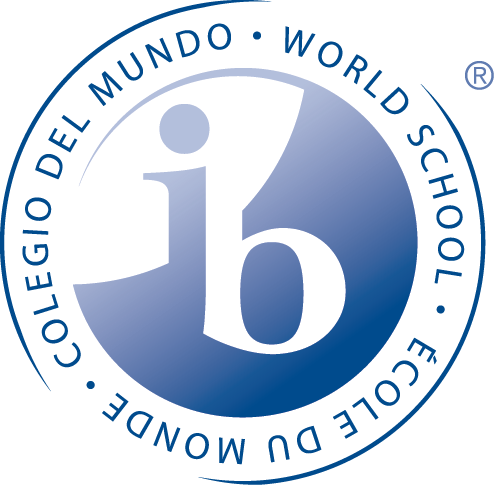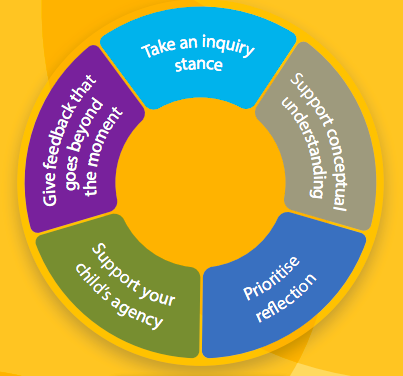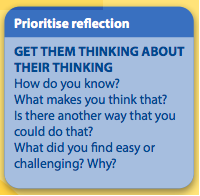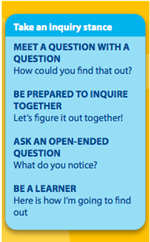
IB Articles
-
IB at Home and at Mays
Benjamin E. Mays IB World School is an International Baccalaureate (IB) Primary Years Programme (PYP) school. An IB education develops lifelong learners. As your child’s first teacher, you play an important role in helping them take their learning deeper. Below are 5 simple ways you can support your child’s IB learning at home. These 5 strategies will help you help your child become a lifelong learner. Each month we will look at one of these 5 strategies.

Prioritize Reflection
What do we mean by “prioritize reflection”? In most basic terms, this means that we want students to think about their thinking. This sounds like such a simple thing, but it is so powerful! An IB education is not just about memorizing facts and skills in isolation. We say that as IB educators, our job is to help students learn how to learn. Memorizing facts will only get you so far, but learning how to use your curiosity about the world around you to ask questions and investigate to find answers is a skill that sets students up for a lifetime of success.
So how can you prioritize reflection at home? Get your child to think about their thinking by asking them reflection questions like:
- How do you know?
- What makes you think that?
- Is there another way that you could do that?
- What did you find easy or challenging? Why?

Support Conceptual Understanding
What do we mean by conceptual understanding? IB explains a concept as a “big idea”—a principle or notion that is enduring and is not constrained by a particular origin, subject matter or place in time (Erickson 2008). Concepts represent ideas that are broad, abstract, timeless and universal.
IB focuses on concepts, not topics. Concepts add depth and rigour in student thinking to the traditional “two-dimensional” curriculum consisting of facts and skills. Concepts place no limits on breadth of knowledge or on depth of understanding, and therefore are accessible to every student.
This helps student to:
- think critically about big ideas
- recognize patterns
- make generalizations, predictions and connections across their learning
- transfer understanding to different contexts.
So how can you support conceptual understanding at home?
- Help your child see connections. When your child is learning about something new, say “This is kind of like_______. Do you see how?”
- Ask your child if they can make connections. When your child encounters something new, say “What does this remind you of? Why? How?” or “What does this make you think about? Why?”
- Value process. When your child solves a problem (any problem - not just school related), ask questions like:
- How did you do that?
- Why did you do that?
- What strategy did you use?
- Refer to the key concepts! IB has 7 key concepts that are used to help students understand the world around them. These key concepts, and the questions that go along with them, can be used when looking at anything! (See below)

Take an Inquiry Stance
What do we mean by inquiry? Inquiry, is one of the most important approaches of the Primary Years Programme (PYP). It recognizes students as being actively involved in their own learning and as taking responsibility for that learning. Inquiry nurtures curiosity and promotes enthusiasm for life-long learning.
Inquiry involves:
- exploring, wondering and questioning
- experimenting and playing with possibilities
- making connections between previous learning and current learning
- making predictions and acting purposefully to see what happens
- researching and seeking information
- establishing and testing theories
- solving problems in a variety of ways
So what does it look like to “take an inquiry stance” at home?
- Meet a question with a question.
When your child asks a question, instead of immediately trying to answer it, ask “How could you find that out?”
- Be prepared to inquire together.
After asking your child “How could you figure that out?, follow it up by helping and supporting them in finding answers to their questions.
- Ask an open-ended question.
Asking questions like “What do you notice?” helps your child to notice patterns and make connections in the world around them.
- Be a learner.
Model for your child how you figure out answers to your own questions.

Supporting Your Child’s Agency
What does “agency” mean? In basic terms, it means that students take responsibility and ownership of their learning.
What could agency look like at home?
- Invite and involve your child’s voice.
Let them express themselves. Ask for their opinions on things. It doesn’t mean that you have to always go with their opinion, but at least let them have a voice in making decisions.
- Support their choices.
What choices is your child making for themselves as a learner and as a member of your household? Let them make their own choices, but also help them to realize that there are consequences for the choices they make (for better or for worse!) Their choices may not always be great, but emphasize learning from your mistakes.
- Emphasize ownership.
Help your child to realize they are in the driver’s seat. They are the ones in charge of their own learning. Asking questions like “What do you want to do about this?” and saying things like “It’s your call” help kids see that they have the power to impact their own learning.







